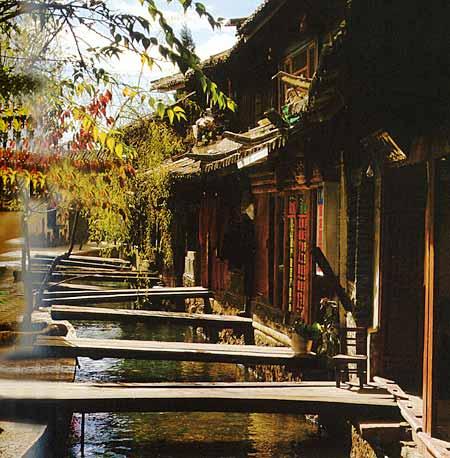 |
|
|
|
|||||||||||
The design and construction of the Old Town of Lijiang had imitated and absorbed the architectural form of the Forbidden City in Beijing and also gave consideration to the actual situation and local residents' psychological and behavioral characteristics, integrating the essence of Han, Bai, Yi and Tibetan nationalities with unique style of Naxi nationality. To the Naxi people, east is the direction the sun rises and represents light and life and therefore the residential buildings were built with their backs to the west and facing east. The Naxi also believed that mountains are where the Gods live while water symbolizes veins linking with their ancestors. Therefore, mountains, springs and surrounding forests were worshipped and protected by them. This has all given the Naxi ethnic group a pleasant environment and the feature of peaceful coexistence of human and God. The Old Town of Lijiang has typically reflected the traditional design ideas of the Naxi ethnic group.
 |
|
The Old Town of Lijiang |
The location selection of the old town had placed full consideration to topography, landforms, direction, orientation, climate and source of water. The old town is located in the center of Lijiang, facing the sun. It backs on Mt. Xiangshan and Mt. Jinhong in the north and the Monkey Mountain in the west, with the mountains blocking the wind from the north and west in winter. With mountains as the base of the city, the city has a varied space layout. The old town is linked with the wide flat ground in the east and south sides, enjoying enough sunlight. The entire city has a layout where its back is to the northwest and faces the southeast. The Yuhe River originating from the Black Dragon Pool is cut into three branches at the boundary of the city and flows to the inner city. After being separated uniformly, it will flow throughout the city as its domestic source of water, forming dozens of waterways and constituting the basic skeleton of the city.